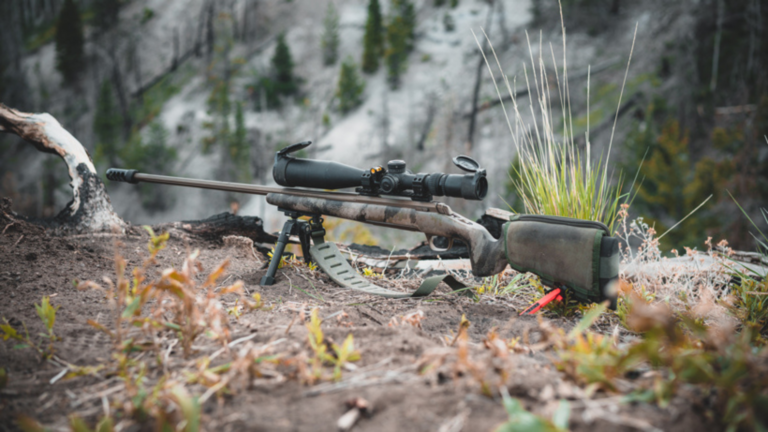As the warmer weather has finally set in, more and more people are de-winterising their boats and flocking to the nearest boat ramp in search of that elusive ‘monster’ catch. The unfortunate downside to this – other than waiting times and a lack of available parking spots, is that many of these punters will be blissfully unaware of a lesser-discussed area of watercraft maintenance – the humble anode.
This article is set to address that knowledge gap by explaining; what an anode is, how it functions, and when to replace it. As a bonus, I’ve also added a section on preventing galvanic corrosion in your above surface fixtures.
To start off, let’s dive into an explanation of what an anode actually is…
What is an anode?
An anode is a small block of soft metal, which is attached to your boat below the surface of the water. It can be mounted on the hull itself, or onto any number of drive components, including; the outboard, rudder, propeller, or propeller shaft.
What does it do?
When two or more dissimilar metals are submerged in water, they create a weak electrochemical reaction (think of it like a small battery). This reaction removes electrons from the weaker metal and transfers them over to the stronger one, creating galvanic corrosion in the process. Prolonged exposure to water will slowly eat away the weaker metal, and over time, will fully consume it.
To combat this, an even weaker metal (the anode) is installed near the site of these dissimilar metals. The sole purpose of the anode is to slowly ‘sacrifice’ itself in order to save these vital (and often expensive) components that are mounted to your boat.
Due to the important nature of this item, regular inspection and replacement is recommended. Failure to do so may result in the anode deteriorating beyond the range of acceptable use. The result of this will cause critical failure in your drive components, and if you’re really unlucky – subsurface holes that could sink your boat.
When should I replace my anode?
The short answer is this – anodes should be replaced when they have been 50% consumed. This provides the greatest amount of protection for your boat and any below-surface drive components.
A more specific timeframe can be difficult to pinpoint, as the depletion rate is dependent on a variety of environmental factors, including; water temperature, salinity, water current flow, stray electrical conductivity, or vessel and jetty wiring faults. Exposure to one (or more) of these factors will drastically increase the depletion rate of your anode, which is why regular inspection and replacement is an important part of your boat’s maintenance schedule. As a rough guide on maintaining the anode on your boat, please refer to the recommendations listed below.
https://www.pinterest.com.au/pin/690598924127467660/
Two small outboard anodes (old and new) placed side by side
Smaller vessels
The manufacturer of your outboard motor will be able to provide you with a ballpark replacement timeframe for your anode – depending upon your chosen anode material and the water type that your boat is used in.
Alternatively, this information can be found in the accompanying user manual that came with the motor. At a minimum, your anode should be inspected every 3- 6 months (depending upon the amount of usage), to ensure that it is still in serviceable condition.
Larger vessels
Anodes mounted on larger (moored) vessels will usually last around 12 months. However, inspection is recommended at regular intervals (i.e. every 3 to 6 months) to ensure that the environmental factors listed previously are not consuming the anode at a more rapid rate.
Due to the size of the anodes used and the difficulty in accessing them, inspection and replacement are recommended by suitably qualified professionals only.
How to calculate anode depletion
In order to accurately measure the depletion rate in your boat or outboard motor, the anode should first be removed from the mounting location. With a set of Vernier calipers, measure the thickness of the anode (see photo), and use the simple calculation shown below.
https://www.pinterest.com.au/pin/690598924127467688/
The current thickness of your anode / (divided by) the original thickness of the anode x 100.
Example
9.1mm / 10mm x 100 = 91%.
i.e. your current anode is at 91% of its original size.
Types of anode material
Throughout history, there have been 3 primary materials used in the production of anodes – Zinc, Aluminium, and Magnesium. While zinc has (more or less) become obsolete in the 21st century, your choice of the remaining two will be dependent upon the salt content of the body of water that you intend to go out in.
Before we discuss each material type in depth, please take note of this warning – Using the incorrect type of anode material will not provide your boat with any form of corrosion protection. If you’re unsure of your current anode material, it’s best that you seek further advice or replace your current anode with a new one.
Zinc
The original anode material that was used on steel-hulled ships from the late 1800’s, until the start of the 21st century. This material provided the user with excellent corrosion protection in saltwater environments and was (initially) more cost-effective than aluminium. One major downside to this material is that it contains cadmium – which is toxic to humans and the environment.
As Aluminium became cheaper and more readily available in the early 1990s, zinc slowly became phased out of production. These days, it’s unlikely that you will encounter a zinc anode on a vessel – but if you do, be sure to take precautions when handling it. This should include the use of sturdy gloves to limit exposure to cadmium, and the thorough washing of your hands afterward to remove any remaining residue.
Aluminium
Ideal for use in salt and brackish waters, aluminium anodes are cheap, effective, and readily available to the average consumer. The downside to this material is that it does not provide any corrosion protection in a freshwater environment.
Magnesium
Ideal for use in a freshwater environment. The downside to this material is that it does not provide corrosion protection in brackish or saltwater environments.
How do I prevent corrosion in above-surface fixtures?
While anodes are not effective in preventing corrosion on above-surface fixtures, there is a simple method to prevent it from occurring. Teflon washers – used in conjunction with marine grade stainless steel fixtures (316 stainless) and marine grade anti-corrosive joining compounds (such as Duralac or Tef-Gel), will provide you with an effective barrier against corrosion. This method can also be used when installing aftermarket sub-surface accessories – such as drain plugs, in small aluminium boats. However, only Duralac should be used for coating fixtures that will be submerged below the surface of the water.
When using these joining products, keep in mind that less is not more. In order to avoid potential corrosion issues, you must ensure that you have applied enough of this compound to coat your bolt threads so that galvanic corrosion does not take place between your aluminium boat and the stainless steel fixtures.
Note: Care must also be taken when handling Duralac, as it is toxic to both humans and animals. Always use gloves and ensure that your hands are washed thoroughly after use.










